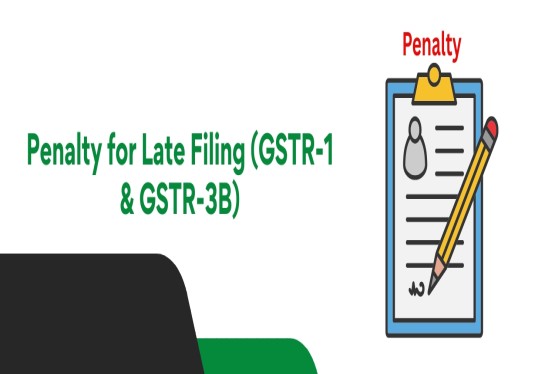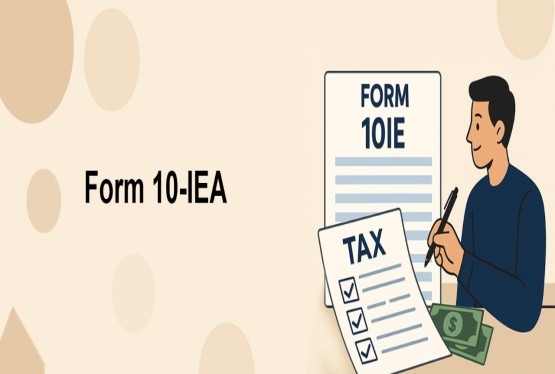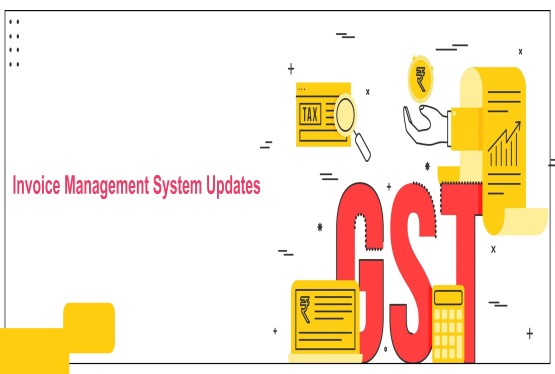The Union Budget 2024 introduced noteworthy revisions to the capital gains tax framework, significantly influencing both individual taxpayers and businesses. Capital gains tax is imposed on the profit derived from the sale of capital assets, such as real estate, equities, and bonds. This article explores the updated tax structure and its implications.
Types of Capital Assets
Capital assets are classified into two main categories based on the duration for which they are held: Short-Term Capital Assets (STCA) and Long-Term Capital Assets (LTCA). The classification depends on the holding period of the asset, with specific rules for different types of assets.
1. Short-Term Capital Assets (STCA)
A capital asset is classified as short-term if it is held for 36 months or less. However, certain assets have a reduced holding period for being considered short-term capital assets:
24 Months Holding Period:
-Unlisted shares (those not traded on a recognized stock exchange in India).
-Immovable properties such as land, buildings, and house properties (from FY 2017-18 onwards).
-For example, if you sell a house property after holding it for 24 months, the income will be treated as a long-term capital gain, provided the property is sold after 31st March 2017. However, this 24-month holding period does not apply to movable properties like jewelry, debt-oriented mutual funds, etc.
12 Months Holding Period:
Certain assets are considered short-term capital assets if they are held for 12 months or less, provided the date of transfer is after 10th July 2014. These assets include:
-Equity or preference shares listed on a recognized stock exchange in India.
-Securities such as debentures, bonds, government securities, etc., listed on a recognized stock exchange.
-Units of UTI, whether quoted or not.
-Units of equity-oriented mutual funds, whether quoted or not.
-Zero-coupon bonds, whether quoted or not.
2. Long-Term Capital Assets (LTCA)
A capital asset is classified as long-term if it is held for more than 36 months. However, certain assets have different holding period criteria:
24 Months Holding Period:
-Land, buildings, and house properties are considered long-term capital assets if held for a period of 24 months or more (from FY 2017-18 onwards).
12 Months Holding Period:
Certain assets are treated as long-term capital assets if held for more than 12 months, including:
-Equity or preference shares listed on a recognized stock exchange in India.
-Securities such as debentures, bonds, government securities, etc., listed on a recognized stock exchange.
-Units of UTI, whether quoted or not.
-Units of equity-oriented mutual funds, whether quoted or not.
-Zero-coupon bonds, whether quoted or not.
Note: Capital gains from the sale of units of specified mutual funds or market-linked debentures acquired on or after April 1, 2023, will always be treated as short-term capital gains, regardless of the holding period.
Key Updates in the 2024 Budget
The 2024 budget simplified and restructured capital gains taxation. Assets are now classified into two holding periods: one year for equities, listed bonds, REITs, and ETFs, and two years for all other assets. Short-term capital gains tax has been standardized at 20% for listed assets, while non-listed assets remain taxed at individual slab rates. Long-term capital gains tax is now a flat 12.5%, eliminating indexation benefits across all assets.
For equities, the increased tax rates are offset by a higher exemption limit of Rs. 1.25 lakh per year. Non-equity assets benefit from lower tax rates and shorter holding periods for long-term classification but lose the advantage of indexation. Specific asset classes, such as unlisted bonds and mutual funds with less than 35% equity exposure, are categorized separately, with gains taxed as short-term income at slab rates regardless of holding period.
Overall, the July 2024 budget represents a pivotal moment in capital gains taxation by streamlining the framework, reducing complexities, and aligning tax rates across various asset classes. These changes aim to balance revenue collection with investor equity and simplify compliance.
Key Milestones in Capital Gains Taxation
Post-2000, three significant milestones have shaped the framework for capital gains taxation in India.
The Union Budget 2004, presented by P. Chidambaram, laid the foundation for a stable capital gains tax structure. It introduced the Securities Transaction Tax (STT), which applied to equity and derivatives transactions on recognized stock exchanges. In return, the budget exempted long-term capital gains on equities and listed securities, provided STT was paid. Equity mutual funds were also included in this exemption, marking the first instance where STT replaced long-term capital gains tax.
The Union Budget 2018, presented by Arun Jaitley, introduced a dual system where STT and long-term capital gains tax coexisted. Gains exceeding Rs. 1 lakh annually were taxed at a flat 10% without indexation benefits. This marked a significant shift in the taxation of equities, balancing revenue generation with investor incentives.
The Union Budget 2024, introduced by Nirmala Sitharaman, brought sweeping changes to short-term and long-term capital gains taxation. Short-term capital gains tax on equities increased from 15% to 20%, aligning it with other asset classes. Long-term capital gains tax on equities also increased from 10% to 12.5%, but the annual exemption limit was raised from Rs. 1 lakh to Rs. 1.25 lakh. Additionally, the holding period for long-term classification was standardized at two years for non-equity assets. Notably, non-equity assets now face reduced tax rates but have lost indexation benefits, simplifying the taxation structure.
Capital Gains Tax Exemptions in India
In India, several provisions under the Income Tax Act offer exemptions on capital gains tax, allowing taxpayers to reduce their tax liability when certain conditions are met. Below is an overview of the key sections under which these exemptions are available:
1. Section 54: This exemption applies to capital gains arising from the sale of a residential property (house or land). The gains are exempt if they are reinvested in purchasing or constructing another residential property within a specified period.
2. Section 54B: This section provides an exemption on capital gains from the sale of agricultural land. To qualify, the gains must be used to purchase another piece of agricultural land within a stipulated time frame.
3. Section 54EC: Under this section, exemptions are available if the capital gains are invested in specific bonds, such as those issued by the National Highway Authority of India (NHAI) or the Rural Electrification Corporation (REC), within six months of the sale.
4. Section 54F: This exemption applies to capital gains from the sale of any asset other than a residential property. To qualify, the proceeds must be reinvested in a residential property within a set period.
5. Section 54EE: This provision allows exemption on long-term capital gains if the gains are invested in units of government-notified funds within six months of the sale or transfer of assets.
6. Section 54D: Under this section, exemptions are provided on capital gains arising from the compulsory acquisition of land and buildings used for industrial purposes.
7. Section 54G: This exemption is available when an industrial undertaking is shifted from an urban area to a rural area. The gains must be used to purchase new assets in the rural area to qualify for the exemption.
8. Section 54GA: Similar to Section 54G, this exemption applies when an industrial undertaking is shifted from an urban area to a Special Economic Zone (SEZ). The capital gains must be used to acquire new assets in the SEZ.
9. Section 54GB: This section offers an exemption on capital gains arising from the sale of a residential property if the proceeds are invested in the equity shares of an eligible start-up company. The start-up must utilize the investment to purchase new assets.
Calculation of Capital Gains
-Short-Term Capital Gains (STCG):
Formula: STCG = Sale Price - (Purchase Price + Cost of Improvement + Transfer Expenses)
Taxation:
-For equity/equity-oriented funds: Taxed at 15% (plus surcharge and cess).
-For other assets: Taxed according to the individual's applicable income tax slab.
-Long-Term Capital Gains (LTCG):
Formula:
-LTCG = Sale Price - (Indexed Cost of Acquisition + Indexed Cost of Improvement + Transfer Expenses)
Taxation:
-For equity/equity-oriented funds: Exempt up to Rs. 1 lakh per year, with any excess taxed at 10% (without indexation).
-For other assets: Taxed at 20% with indexation benefits.
-Indexation for LTCG
-Indexed Cost: Adjusts the purchase price to account for inflation using the Cost Inflation Index (CII) issued annually by the Income Tax Department.
Formula:
-Indexed Cost = Purchase Price × (CII of Sale Year / CII of Purchase Year).
Exemptions on LTCG
Certain exemptions are available when gains are reinvested in specific assets within prescribed time limits:
-Section 54: Exemption for LTCG from the sale of a residential property, reinvested in another residential property.
-Section 54F: Exemption for LTCG from the sale of assets other than a residential property, reinvested in residential property.
-Section 54EC: For LTCG reinvested in bonds issued by NHAI or REC (up to Rs. 50 lakhs).
Offsetting Capital Losses
-Short-Term Losses: These can offset both STCG and LTCG.
-Long-Term Losses: Can only offset LTCG.
-Losses can be carried forward for up to 8 assessment years.
Key Differences Between Short-Term and Long-Term Capital Gains
The primary differences between STCG and LTCG are based on the holding period and the corresponding tax treatment:
Holding Period:
-Short-term capital assets in India are those held for less than 24 months (36 months for debt mutual funds before April 1, 2023).
-Long-term capital assets are held for more than 24 months (36 months for debt mutual funds before April 1, 2023).
Tax Treatment:
-STCG is taxed as per the income tax slab rates, potentially pushing you into a higher tax bracket.
-LTCG enjoys more favorable tax rates, particularly for assets like equities, where gains exceeding Rs. 1 lakh are taxed at 10%, with no indexation benefits.
Tax Rates on Capital Gains in India
Below is a summary of the tax rates applicable to various types of capital gains in India:
|
Type of Asset |
Holding Period |
Tax Rate |
|
Equity Shares and Equity-Oriented Mutual Funds |
Long-Term (More than 36 months) |
12.5% (on gains exceeding Rs. 1.25 lakh) |
|
|
Short-Term (Up to 36 months) |
15% |
|
Other Financial Assets (e.g., Bonds, Debentures) |
Long-Term (More than 36 months) |
12.5% |
|
|
Short-Term (Up to 36 months) |
30% |
|
Real Estate |
Long-Term (More than 24 months) (before 23rd July 2024) |
20% with indexation benefit |
|
|
Long-Term (More than 24 months) (after 23rd July 2024) |
12.5% without indexation benefit |
|
|
Short-Term (Up to 24 months) |
30% |
Tax Rates on Equity and Debt Funds in India
Here’s the tax rate comparison for equity and debt funds in India before and after 1st April 2023:
|
Fund Type |
Before 1st April 2023 |
Effective 1st April 2023 |
|
Debt Funds |
Short-Term Gains |
Taxed at individual’s income tax slab rates |
|
|
Long-Term Gains |
10% without indexation or 20% with indexation (whichever is lower) |
|
Equity Funds |
Short-Term Gains |
15% |
|
|
Long-Term Gains |
10% above Rs. 1 lakh without indexation |
Conclusion
Capital Gains Tax plays a crucial role in tax planning for both individuals and businesses in India. A clear understanding of the various categories of capital gains, the respective tax rates, and the exemptions available is vital for efficient tax compliance. By strategically managing investments and taking advantage of tax-saving options, individuals can reduce their capital gains tax liability and enhance their overall financial outcomes.
Frequently Asked Questions(FAQs)
1. What is the difference between short-term and long-term capital gains tax?
Ans. Capital gains taxes vary based on the holding period of investments. Short-term capital gains (STCG) are taxed at higher rates for assets held for one year or less, while long-term capital gains (LTCG) benefit from lower tax rates for assets held for over a year. The tax treatment encourages long-term investing by offering lower rates for longer-held assets.
2. Are long-term capital gains better than short-term?
Ans. Yes, long-term capital gains typically enjoy more favorable tax treatment, which can help reduce your overall tax liability. Understanding the tax implications of both short-term and long-term investments is crucial for optimizing your returns.
3. Is STCG exempt up to Rs. 1 lakh?
Ans. Previously, individuals could exempt up to Rs. 1 lakh in short-term capital gains, but this exemption limit has been increased to Rs. 1.25 lakh, offering more tax relief to middle- and lower-income taxpayers.
4. What is the percentage difference between short-term and long-term capital gains?
Ans. Short-term capital gains (STCG) are taxed at rates between 10% and 37%, depending on the income level, for assets sold within a year of purchase. Long-term capital gains (LTCG), for assets held for more than a year, are taxed at a maximum rate of 20%, with some assets potentially taxed at a lower rate or even exempt under certain conditions.
5. What is the difference between short-term and long-term goals?
Ans. Short-term goals are typically set for weeks, months, or quarters, and progress can be easily measured. Long-term goals, on the other hand, are typically set over years and may not have a clear timeline, requiring more patience and persistence to achieve due to the longer wait for results.
6. How much capital gain is tax-free?
Ans. For equity-related investments such as shares and equity-oriented mutual funds, long-term capital gains up to Rs. 1.25 lakh per year are tax-free. Gains exceeding this amount are subject to a 12.5% tax.
7. What is the exemption for long-term capital gains?
Ans. Capital gains up to Rs. 1.25 lakh per year from equity investments are exempt from tax. For gains exceeding this threshold, a 12.5% tax applies to long-term capital gains on shares and equity-oriented mutual funds.
8. How many years is considered short-term and long-term for investments?
Ans. Short-term investing refers to holding an asset for one year or less, or even a few weeks for day traders. Long-term investing usually involves holding assets for more than a year, with many strategies recommending holding for 5–10 years or even longer.








_crop10_thumb.jpg)

















































































_for_FY_2025-26_crop10_thumb.jpg)












_learn_crop10_thumb.jpg)








_Filing_Due_Dates_for_FY_2024-25_learn_crop10_thumb.jpeg)







































_of_GST_Act_learn_crop10_thumb.jpg)










_Under_GST_learn_crop10_thumb.jpg)









_crop10_thumb.jpg)


_crop10_thumb.jpg)






_learn_crop10_thumb.jpg)






















_of_the_Income_Tax_Act_learn_crop10_thumb.jpg)



_learn_crop10_thumb.jpg)






_learn_crop10_thumb.jpg)






_crop10_thumb.jpg)




















_in_The_Income_Tax_Act,_1961_learn_crop10_thumb.jpg)



_learn_crop10_thumb.jpg)



_of_the_Income_Tax_Act_learn_crop10_thumb.jpg)


_Of_Income_Tax_Act_learn_crop10_thumb.jpg)








_learn_crop10_thumb.jpg)








_learn_crop10_thumb.jpg)
_crop10_thumb.jpg)






















_learn_crop10_thumb.jpg)
_for_Import_and_Export_learn_crop10_thumb.jpg)



























